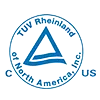Workplace safety has come a long way from the rudimentary first aid available in the early 20th century. But there’s still something nostalgic and charming about the vintage metal boxes and no-frills kits used for generations of workers before advanced medical solutions.
At Yoo Shing, we appreciate the simplicity and utilitarian design of old-fashioned first aid kits and containers. While we provide businesses top-quality modern kits, there are valuable lessons we’ve learned from looking back at the industrial past.
In this blog, we’ll explore:
The history and evolution of early 20th century first aid boxes
Why basic vintage kits remained effective for so long
The advantages simple kits still offer workplaces today
Where to find and use vintage-style first aid kits
How to build simplified portable and wall-mounted kits
Tips for modifying no-frills kits to meet modern needs
Ensuring old-school kits meet current regulations
Revisiting the back-to-basics approach of the past highlights how first aid doesn’t have to be complicated to be vital for workplace safety.
The Utilitarian charm of Early 20th Century First Aid
Workplace first aid prior to safety regulations consisted primarily of rudimentary medical boxes or cabinets containing the most basic supplies.
The late 1800s and early 1900s saw the first dedicated first aid kits emerge. Transportable woven leather or woven wire baskets held very simple contents linen bandages, cotton pads, ointments, and little specialized equipment.
By the 1920s-1930s, advancing workplace safety consciousness led to further developed wall-mounted cabinets for centralized access along with more portable metal boxes. Common standard contents included:
Adhesive bandages
Sterile gauze pads
Antiseptic ointments
Burn relief cream/oil
Triangular slings
Scissors
Tweezers
These no-frills kits formed the backbone of first aid for decades of industrial workers before more modern advances. Their constrained focus on essential, multipurpose supplies prevailed.
Why Simple Vintage Kits Worked
Early 20th century first aid kits succeeded with limited contents for several reasons:
Compact and Lightweight
Small, portable kits were easy to keep in multiple locations without occupying excessive space. Workers could readily carry or move kits where needed.
Intuitive Organization
Kits had simple, visible contents that made finding the right basic item fast during time-sensitive injuries.
Multipurpose Supplies
Broad use bandages, dressings, ointments, etc covered a wide range of basic wounds and avoided overspecialization.
Durable Materials
Rugged woven, leather, and metal containers protected supplies from work conditions better than cardboard or plastic.
Accessible Care Basics
Kits enabled workers who weren’t doctors to still provide immediate, life-saving intervention with supplies on hand.
The vintage approach reminds us first aid doesn’t need to be elaborate to effectively empower safety.
Benefits of Minimalist Kits Today
While modern first aid kits necessarily expanded to include specialized solutions and new medical technologies, the minimalism of vintage kits still offers advantages:
Low Cost
Pared-down kits with only bare essentials reduce wasted budget on excessive or duplicative supplies.
Lightweight Portability
Compact, transportable kits with minimal tools integrate easily alongside mobile crews and into vehicles.
Faster Injury Response
Uncluttered kits allow workers to locate and apply exactly the right basic dressing or tool immediately.
Simplified Maintenance
Replenishing and updating streamlined kits is quicker with fewer total items to inspect and replace.
Flexible Customization
Straightforward kits can be modified with specialized items for your particular industry hazards and roles.
Emergency Accessibility
Multiuse components allow effective treatment for a range of injuries when fully stocked professional kits aren’t on hand.
The right balance of vintage first aid minimalism and modern solutions benefits many modern workplaces.
Where to Use Vintage-Inspired Kits
There are smart applications to leverage easy-to-maintain, no-frills first aid kits:
Supplementary Vehicles Kits
Portable vintage-style metal boxes with essentials are perfect for glove compartments, flight kits, and emergency bags.
Remote or Mobile Work
Simplified kits are ideal for isolated outdoor work, construction sites, maintenance crews, and other transient locations.
Do-It-Yourself Spaces
Home garages, workshops, maker-spaces, and studios can benefit from wall-mounted minimalist first aid retro cabinets.
Training and Classes
Use back-to-basics kits to educate on core competencies and sharpen skills for constrained environments.
Common Areas
Waiting rooms, reception areas, and offices gain vintage appeal from modest classic kits versus institutional cabinetry.
Budget-Conscious Businesses
Small companies, non-profits, and cost-conscious organizations can access affordable essentials through pared-down kits.
Vintage-style simplified kits serve numerous niche needs on top of fully stocked professional kits.
Creating Simple Portable First Aid Kits
To assemble your own vintage-inspired portable first aid kit, look for:
A Durable, Vintage Container
Metal tins and boxes with latch closure in green, black, silver, or white
Woven leather, canvas, or galvanized pails with handles
Vintage medical bag, carton, or military medic pouch
Edited Essentials
Bandages of multiple sizes
Sterile gauze pads
Antiseptic wipes
Antibiotic and burn ointments
Medical tape and scissors
Single-use instant cold pack
CPR mask or face shield
Pair of exam gloves
Small first aid guide
Outfit kits with 1-2 each of the critical basics tailored to likely needs. Skip duplicates or rarely used items common in overstocked professional kits.
Custom Supplemental Items
Consider adding a few specialized items like tourniquets, eye wash, tweezers, splints, or trauma dressings depending on your particular workplace risks and trained responders.
Designing Minimalist Wall-Mounted Kits
To install simple vintage-style first aid cabinets in your facility, look for:
A Visual Vintage Cabinet
Consider reclaimed wood, galvanized metal, or painted steel cabinets evoking industrial styles of the 1920s-40s factory era.
Labeled External Signage
Use bold sans-serif fonts and retro colors like red, white, and green for visibility. Add iconic first aid symbols like crosses.
Compartmentalized Interior
Separate contents into bins, boxes, or pouches to organize essentials categories like bandages, ointments, tools, etc.
Consolidated Supplies
Stock cabinets with multi-use basics like variety packs of bandages, gauze, tape, wipes, ointments, shears, and disposable gloves.
Updated Medical Items
Despite exterior throwback styling, include modern solutions like instant cold packs, trauma pads, CPR shields, burn gel, and eyewash.
Edit out excess or specialized items that make sense for portability but not permanent access points.
Modifying Vintage Kits for Modern Needs
To balance simplicity with newer medical expectations:
Review Compliance Standards
Ensure pared-down kits still meet OSHA and ANSI minimum quantity recommendations for your number of workers.
Add Essential PPE
Include disposable gloves, CPR masks, and eye protection even in compact kits to prevent disease transmission.
Consider High-Risk Items
Splints, tourniquets, trauma pads, thermal blankets, and other specialty gear may be justified for higher risk categories of workers.
Account for Expiration Dates
Swap in modern equivalents of old-fashioned supplies like antiseptic creams with shorter shelf lives.
Provide Instructions
Include basic visual guides on proper use of supplies since antiquated contents lack directions.
Enable Accessibility
Follow modern placement and accessibility rules for wall-mounted cabinets and portable kits even in vintage housings.
Old-fashioned first aid kits strike a balance between heritage charm and practical workplace safety when thoughtfully updated.
At Yoo Shing, we build professional-grade modern first aid kits but remain inspired by the simplicity and effectiveness of vintage solutions. Contact us to discover how pared-down kits can supplement your safety program.








